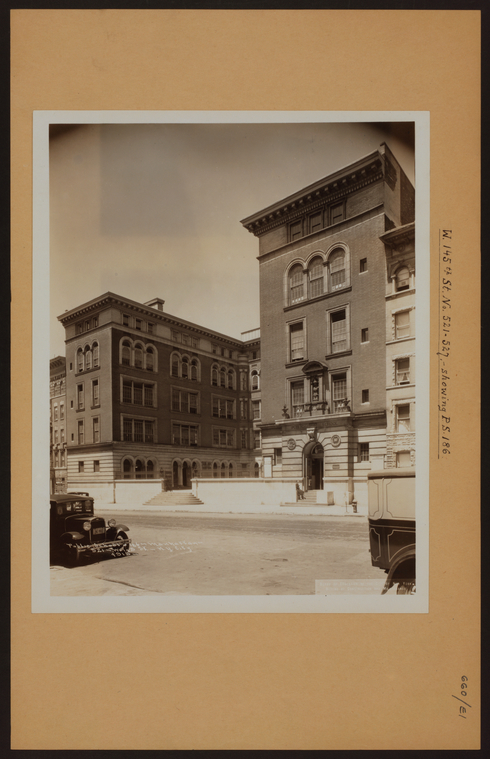NYC Neighborhoods
On the Town: 7 Archtober Buildings of the Day & NYPL Resources
Archtober is an annual month-long celebration of New York City's built environment, with thirty-one "building of the day" sites. That can be a lot to take in; here are seven locations that archi-lovers can explore any day of the year, using materials in the Irma and Paul Milstein Division of United States History, Local History and Genealogy, and a variety of other NYPL collections and resources.
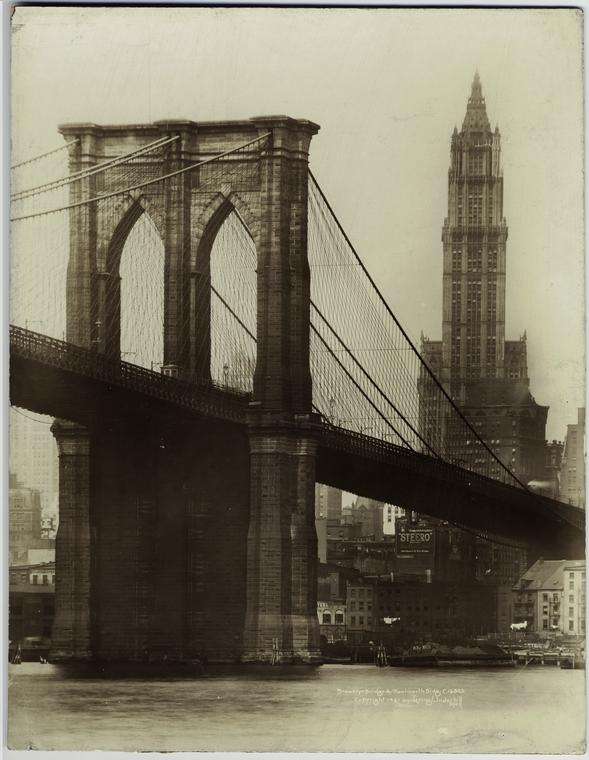
The Woolworth Tower Residences, Manhattan
233 Broadway was built for Frank W. Woolworth (1854–1919) and designed by Cass Gilbert (1859–1934). Always a commercial structure, now a portion of the building is being converted to residences, and rebranded. My colleague, Phil Sutton, wrote this great essay in celebration of the building's centennial, in 2013. You can also search for books and more related to the so-called Cathedral of Commerce in the Library catalog, and these titles, about and by the architect:
- Cass Gilbert family miscellany.
- Dinner given to Cass Gilbert, architect, by Frank W. Woolworth, F. Hopkinson Smith presiding. April 24, 1913. The Woolworth building, New York.
- Cass Gilbert; reminiscences and addresses.
- Inventing the skyline : the architecture of Cass Gilbert / edited by Margaret Heilbrun ; with an introduction by Hugh Hardy.
- Cass Gilbert, life and work : architect of the public domain / edited by Barbara S. Christen and Steven Flanders ; introduction by Robert A.M. Stern.
- The American skyscraper : cultural histories / edited by Roberta Moudry.
- Minnesota 150 : the people, places, and things that shape our state / Kate Roberts.

55 Water Street, Brooklyn
Now home to Empire Stores, the building with the distinctive arched shutters near Brooklyn Bridge Park also holds exhibitions for Brooklyn Historical Society. You can explore its history, Brooklyn's role in waterfront shipping and store houses, and waterfront planning, with these, for starters:
- NYPL Martin Duberman Visiting Scholar for 2017 Hugh Ryan's presentation on the Queer Histories of Brooklyn's Working Waterfront
- Waterfronts -- New York (State) -- New York -- Planning.
- Waterfronts -- Planning.
- Brooklyn Bridge Park (New York, N.Y.) -- History.
- Parks -- New York (State) -- New York -- History.
- Waterfronts -- New York (State) -- New York -- Maps.
- View the waterfront over time in maps on Digital Collections
Noguchi Museum, Queens
Isamu Noguchi (1904–1988) established the namesake Garden Museum in 1985 with a primary purpose of showcasing his distinctive sculpture, furniture, illustrations, and stage set designs. Open to the public five days a week, in addition to being a venue for exhibiting contemporary sculpture, it is an example of adaptive reuse: the site originally held a photogravure plant and gas station. More on the artist, and similar institutions, follows, first, by subject:

- Noguchi, Isamu, 1904-1988.
- Noguchi, Isamu, 1904-1988 -- Exhibitions.
- Isamu Noguchi Garden Museum -- Catalogs.
- Isamu Noguchi Garden Museum.
- Sculpture, Modern -- 20th century -- Catalogs.
- Sculpture, American -- Exhibitions.
- Sculpture, Modern -- 19th century -- United States -- Exhibitions.
- Sculpture, Modern -- 20th century -- Exhibitions -- United States.
- The museum transformed : design and culture in the post-Pompidou age / Douglas Davis.
- Interview with Isamu Noguchi, 1979 (available for streaming at the Library for the Performing Arts)
- On becoming an artist : Isamu Noguchi and his contemporaries, 1922-1960 / Amy Wolf.
- Museum of stones : ancient and contemporary art at the Noguchi Museum / Curated and Edited by Dakin Hart ; With contributions by Dakin Hart, Matt Kirsch, and Joseph Scheier-Dolberg; and a Foreword by Jenny Dixon.
The Residences at PS 186 & Boys & Girls Club of Harlem, Manhattan
Architect Charles B. J. Snyder (1860–1945) had a vision: build public schools with good ventilation, fire protection, high ceilings, large windows, and room to play, and during his tenure as Superintendent of School Buildings from 1891–1923, he implemented his ideas in over 140 elementary, 10 junior high, and 20 high schools within the five boroughs. PS 186 is not a landmark, but it is a Snyder design, and it recently began a long-awaited transformation into affordable housing in addition to its role as a home for the local Boys & Girls Club. My colleague, Andy McCarthy, authored this Research Guide to NYC Schools, which is chock full of facts and useful links, including the history of public schools in the city, and you might also be interested in:
- Affordable Housing
- Housing -- New York (State) -- New York -- History.
- Boys & Girls Clubs of America.
And you can see the block across the years in fire insurance maps from 1909, 1914, and 1916.
Alexander Hamilton U. S. Custom House, Manhattan
One might accuse this author of a fondness for Cass Gilbert, and that is a fair assessment. (He does make two appearances on this list.) The architect from Minnesota won the commission for the Port of New York's duty collection agency, somewhat controversially (one might say he knew a guy), and construction began in 1902. Named after everyone's favorite first Secretary of the Treasury, and now a National Historic Landmark (recognized for its significance in the history of the greater United States), the building presently houses the United States Bankruptcy Court for the Southern District of New York, the George Gustav Heye Center of the National Museum of the American Indian, and the New York City office of the National Archives. Sculptor Daniel Chester French (1850–1931) contributed the four-part allegorical sculptural group The Continents, outside, executed by New York stonecutting powerhouse the Piccirilli Brothers. There's a lot there, and you can start with these resources:
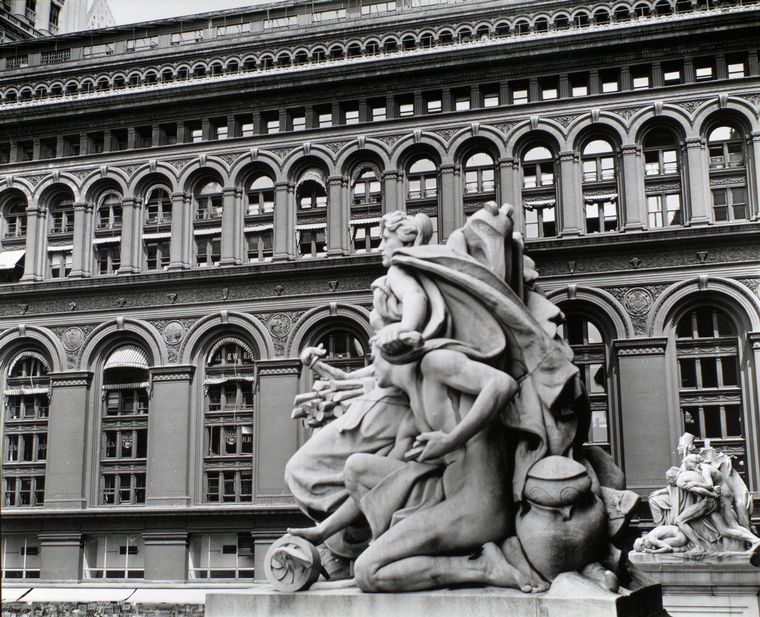
Daniel Chester French:
- Daniel Chester French, an American sculptor / Michael Richman; postscript by Paul W. Ivory.
- Daniel Chester French. (autobiographical material)
- Memories of a sculptor's wife, by Mrs. Daniel Chester French.
Piccirilli Brothers:
- Attilio Piccirilli; life of an American sculptor, by Josef Vincent Lombardo ...
- Freeing the angel from the stone : a guide to Piccirilli sculpture in New York City / Jerry and Eleanor Koffler.
- Piccirilli family papers, 1876-1967 (bulk 1932-1945).
National Archives:
- United States. National Archives and Records Administration.
- National Archives (U.S.)
- National Archives at New York City [electronic resource] : federal records of the Northeast Region from New York, New Jersey, Puerto Rico, U.S. Virgin Islands.
Bowling Green, also, is well-represented in Digital Collections, from maps to engravings to post cards and photographs.
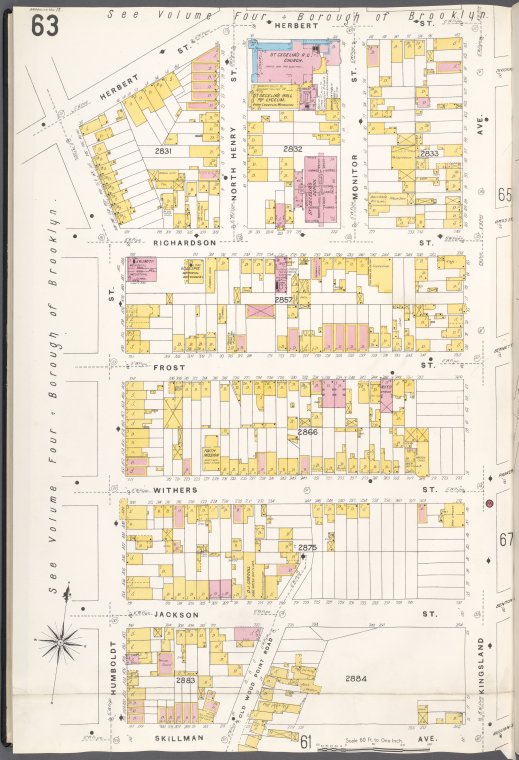
Carroll House, 2 Monitor Street, Brooklyn
2 Monitor Street, in this Google street view from 2014, did not seem real when I first saw it, but, yes—that's a residential building composed of individual shipping containers. Zowie! This magnetic paradise by Lot-EK architects is not entirely unusual for the firm, though it is a mild departure for what was once a neighborhood of vinyl siding-clad low-scale buildings. It's also a great example of how to research a building that's been demolished, What was here before?—a question we get in Milstein more frequently than you'd expect! Build your knowledge base with these titles on modular construction and prefabricated housing, shipping containers, and see Williamsburg over time in a new way using the maps by decade tool from the geniuses at the NYPL Space/Time Directory.
- The box : how the shipping container made the world smaller and the world economy bigger / Marc Levinson.
- Shipping container / Craig Martin.
- A history of the corrugated shipping container industry in the United States / Wilbur F. Howell.
- LOT/EK : urban scan / [authors, Ada Tolla, Giuseppe Lignano, Philip Nobel ; essays by Philip Nobel].
- Prefabricated Housing.
- Neighborhood research guide from the Milstein Division
- Who Lived in a House Like This? Researching Your New York City Home
Governors Island, New York Harbor
Allo, Gov'nor! —Right, you didn't come here for jokes, forgive me. The small landmass in the Harbor has shifted shape over the centuries, in addition to acting as home—actual and metaphorical—to a variety of institutions and individuals, from public art to diplomatic summits, from one resident to a haven of bike paths and poetry festivals. See the change, in maps, guide books, and government publications:
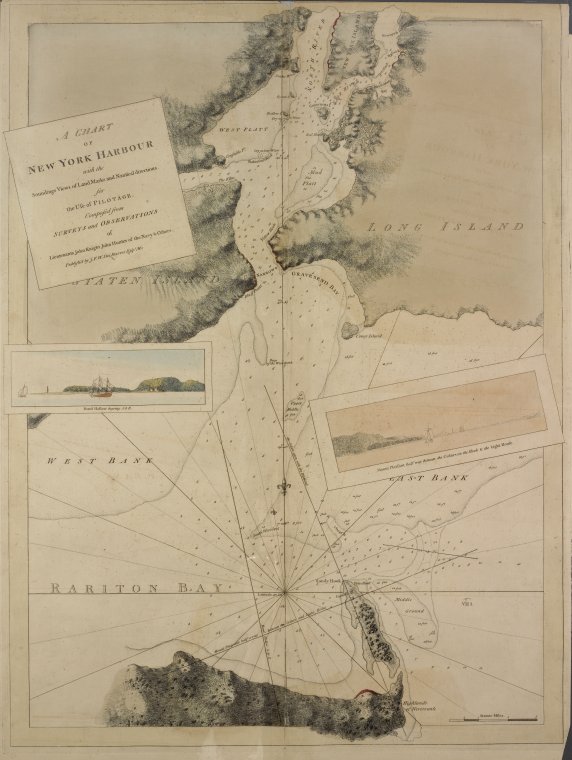
- Governors Island Historic District designation report / prepared by the Research Department of the New York City Landmarks Preservation Commission
- Three centuries under three flags : the story of Governors Island from 1637 / Anastasio Carlos Mariano Azoy ; [revised and updated by Paul T. Mobley.].
- Photographs from Manhattan seascapes [graphic] / Robert Gambee.
- Magnetic city : a walking companion to New York / Justin Davidson. (eNYPL resource, also available as a book)
- The Little Bookroom guide to New York City with children : play, eat, shop / Angela Hederman, Michael Berman ; photographs by Michael Berman.
- Opening statements : law, jurisprudence, and the legacy of Dutch New York / edited by Albert M. Rosenblatt and Julia C. Rosenblatt.
- The lost synagogues of Manhattan : including shuls from Staten Island and Governors Island / by Ellen Levitt.
- Guide to New York City urban landscapes / Robin Lynn and Francis Morrone ; photography by Edward A. Toran ; foreword by Pete Hamill ; introduction by Richard J. Moylan.
- It's my island : a user's guide to Governors Island, 2011 / Regional Plan Association.
- Castle Williams [electronic resource] : historic structure report : Governors Island National Monument, National Parks of New York Harbor, New York, New York / by Barbara A. Yocum.
- Gateway to America : the Statue of Liberty, Ellis Island, and seven other historic places / Gordon Bishop ; photographs by Jerzy Koss.
- [online resource] Governors Island : options for reuse after federal government departure : hearing before the Subcommittee on Government Management, Information, and Technology of the Committee on Government Reform and Oversight, House of Representatives, One Hundred Fifth Congress, first session, July 14, 1997.
- Governors Island National Monument : draft general management plan and environmental impact statement and final plan and environmental statement
- Allison Smith : The muster : a project of the Public Art Fund, Governors Island, New York, Saturday, May the 14th, 2005.
- [electronic resource] Fort Jay : historic structure report : Governors Island National Monument, National Parks of New York Harbor, New York, New York / by Barbara A. Yocum.
Further Reading
So many buildings, so little time. It was hard to whittle this list down, and there are so many more #BOTD sites worth exploring! Got a favorite? A suggested research subject? Let us know if the comments. And, if you haven't already, take a gander at these:
- Research guides from Milstein
- Research guides from Art & Architecture
- This NYPL NYC Neighborhoods blog channel
- Preservation month 2016
- Preservation month 2017
- 15 (ahem, 17) Open House New York Sites You Can Research at NYPL
- Our classes and events! Check nypl.org/events for future offerings on all things architecture, history, and New York City
This essay and guide was written in conjunction with a post by the author on New York City architecture appreciation festival, Open House New York, published earlier this month.
Read E-Books with SimplyE
 With your library card, it's easier than ever to choose from more than 300,000 e-books on SimplyE, The New York Public Library's free e-reader app. Gain access to digital resources for all ages, including e-books, audiobooks, databases, and more.
With your library card, it's easier than ever to choose from more than 300,000 e-books on SimplyE, The New York Public Library's free e-reader app. Gain access to digital resources for all ages, including e-books, audiobooks, databases, and more.
If you don’t have an NYPL library card, New York State residents can apply for a digital card online or through SimplyE (available on the App Store or Google Play).
Need more help? Read our guide to using SimplyE.
